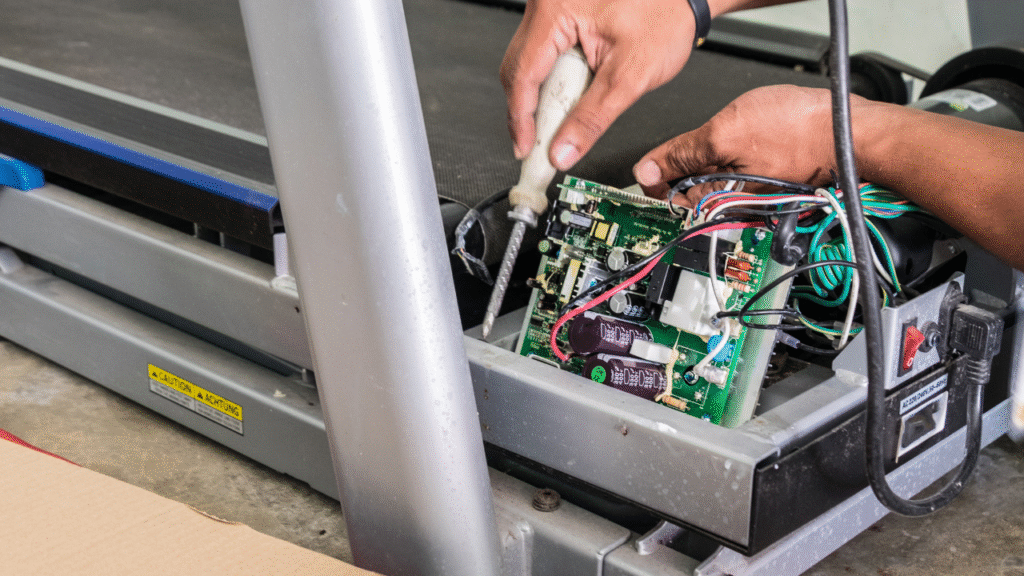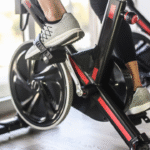How to Extend the Life of Your Treadmill with Proper Maintenance
Clean the Deck and Belt After Each Use
Sweat, dust, and small debris can build up between the belt and deck, making the treadmill work harder and wear out faster. After every workout, use a soft cloth to wipe off sweat—and sweep or gently vacuum around the belt if needed. A quick clean helps reduce friction and can prevent premature damage to both the belt and the motor.
Lubricate Your Treadmill Regularly
Your treadmill’s manufacturer recommends specific intervals for lubrication—often every three to six months depending on use. Apply treadmill-grade silicone lubricant under the belt, then run the treadmill at a slow speed for a couple of minutes to distribute it evenly. Lubrication lowers friction, keeping the belt moving smoothly and saving wear on the motor and bearings.
Check and Tighten All Bolts and Screws
With regular use, bolts and screws can loosen, causing rattling, misalignment, or even safety issues. Every month, turn off the machine and check key areas—such as the handles, console, and motor cover—for any loose hardware. Gently tighten as needed, but be careful not to strip the threads. Tight and secure components help the treadmill run quietly and stay safe.
Keep the Motor Area Dust-Free
Dust can be your treadmill’s silent enemy. Over time, dust buildup in the motor area can clog cooling vents, cause overheating, and reduce motor life. Every few months (or sooner if you live in a dusty space), unplug the treadmill and use a soft brush or a low-power vacuum to carefully clean the motor housing. A dust-free motor runs cooler and lasts longer.
Monitor Belt Tension and Alignment
A misaligned or too-tight belt can cause uneven wear, belt slippage, or even damage to the frame. Test belt alignment by running the treadmill at a low speed—if the belt veers to one side, adjust the rear rollers with the little bolts usually found at the back. Likewise, check tension: the belt should lift a few inches from the deck but not sag. Adjusting belt alignment and tension keeps workouts smooth and prevents severe wear.
Use the Treadmill on a Level, Stable Surface
To keep your treadmill working smoothly for years, it needs a solid foundation. Set it up on a level, sturdy floor—avoid soft carpets or uneven tiles. These can cause wobbling, misalignment, and extra wear on internal parts. If your floor isn’t flat, use leveling feet or a small stable platform. A stable base helps the treadmill run quietly and reduces strain on its components.
Allow Proper Warm-Up and Cool-Down Time
Just like us, treadmills benefit from easing into workouts and winding down afterward. Begin each session with a one to two-minute warm-up at low speed, and end with a similar cool-down. This helps the motor temperature settle in safely and reduces stress on belts and rollers. Gradual changes in pace also make for smoother belt movements, reducing long-term wear.
Follow the Manufacturer’s Maintenance Schedule
Every treadmill model comes with a recommended care schedule—from lubrication and cleaning intervals to part checks. Using this schedule helps you stay ahead of trouble, whether it’s a loose screw or a worn-out belt. Keep the owner’s manual handy or write reminders in your phone. Keeping up with these small, routine steps can significantly prolong your treadmill’s life.
Avoid Overloading with Heavy Use or Extra Weight
Treadmills are built for users within a certain weight range and daily usage time. Exceeding that—especially over long periods—can stress the motor, deck, and frame. Be mindful of your machine’s specifications. If multiple people use it frequently or heavier users rely on it, consider alternating workout times and adjusting speed or incline to lighten the load.
Store and Cover Your Treadmill When Not in Use
Dust, sunlight, and humidity can gradually damage electronic components and parts. Cover your treadmill when it’s not in use—even a simple dust cover goes a long way. If you don’t use it every day, consider moving it to a dry, clean area. This helps protect it from unnecessary wear and keeps it ready for your next session.
Conclusion
Taking simple maintenance steps like cleaning the deck, lubricating on schedule, tightening hardware, keeping dust away from the motor, and watching belt alignment and tension can add years to your treadmill’s life. These practices keep workouts smooth, quiet, and safe. For more guidance or help setting up a maintenance routine, feel free to visit https://treadmillrepairbhubaneswar.in/








1 Comment